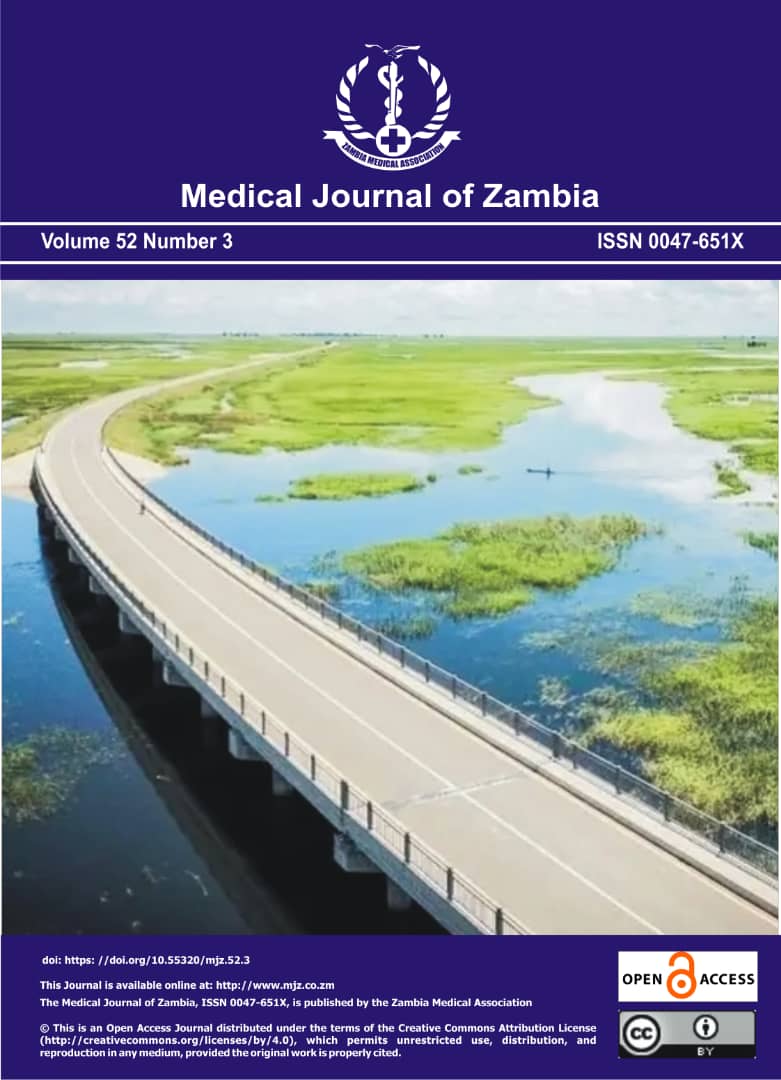Pattern of Orbital Fractures and Their Management in a Tertiary Level Hospital in Tanzania
DOI:
https://doi.org/10.55320/mjz.52.3.709Keywords:
orbital wall, orbital rim, fracture, managementAbstract
Background: Several studies on facial bone fractures have been carried out in Tanzania but none has specifically reported the pattern of bony orbital fracture. This study hence aimed to document the pattern, management, and outcome of orbital fractures at a tertiary health facility in Tanzania.
Methods: This analytical cross-sectional study was carried out for a year at Muhimbili National Hospital (MNH). All patients who had sustained facial bone fractures were recruited for the study. The questionnaire was designed to obtain patients' sociodemographic information and their clinical findings. The data were analysed using IBM® SPSS Statistics version 27
Results: Of the 372 patients with maxillofacial osseous injuries, 131 (35.2%) had orbital fractures. Their age ranged between 15 and 60 years with a mean of 32.22 ± 9.87 years. The floor of orbit (n=107, 81.7%) and lateral wall (n=90, 68.7%) were frequently affected by walls, similarly, the inferior rim (n=95, 72.5%) and lateral rim (n=76, 58.0%) were most affected. The zygoma was the most common concomitant fractured bone (n=65, 49.6%). Surgery was mostly (n=72, 55.0%) opted for the management of the orbital fractures.
Conclusion: Orbital bone fractures occur frequently and should always be suspected in polytrauma cases. Young individuals and males are more affected with road traffic crashes being the leading cause. The floor of the orbit is the most vulnerable anatomical location, and management depends on the complexity of the fracture.
Downloads
Downloads
Published
Issue
Section
License
Copyright (c) 2025 Medical Journal of Zambia

This work is licensed under a Creative Commons Attribution-NonCommercial 4.0 International License.









